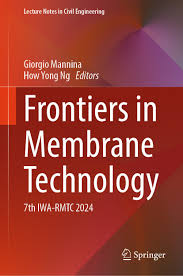Membrane bioreactor (MBR)technology has been employed in sewage
sludge treatment within polyhydroxyalkanoate (PHA) production systems to
tackle challenges like sustainable recovery of volatile fatty acids (VFA) and achieving
high-quality effluent. Typically, MBRs utilize pressure-driven membranes,
mainly ultrafiltration (UF) membranes. Despite its advantages, membrane fouling
remains a significant hurdle, particularly when scaling up from laboratory-scale
to pilot and full-scale plants. Living Membranes® (LM) offer a novel approach
to self-forming dynamic membranes (SFDM), relying on the formation of a stable
layer of sludge particles, organic compounds, and microorganisms between
a cost-effective supporting materials. LM® reframes membrane fouling from a
drawback to a key part of the treatment process. Being composed of organic
materials, the encapsulated layer within LM® serves as both a carbon source
and a nutrient trap, promoting microbial growth and ensuring high contaminant
removal. This abstract presents insights from the application of pilot-scale ultrafiltration
membrane bioreactor (UF-MBR) and Living Membrane® bioreactor
(LMBR) for PHA production. The UF-MBR and LMBR technologies have been
compared under both anaerobic conditions, aimed at VFA production via sewage
sludge acidogenic fermentation, and aerobic conditions, mainly focused on the
removal of contaminants. Preliminary results suggest that LM® offers a sustainable
and efficient alternative to conventional UF membranes in sewage sludge
treatment, potentially enhancing the recovery of valuable resources such as clean
water, VFAs, and PHA.
2024
Improving Recovery of Valuable Bio-Products from Sewage Sludge Using Innovative Membrane Technologies
- Frontiers in Membrane Technology
